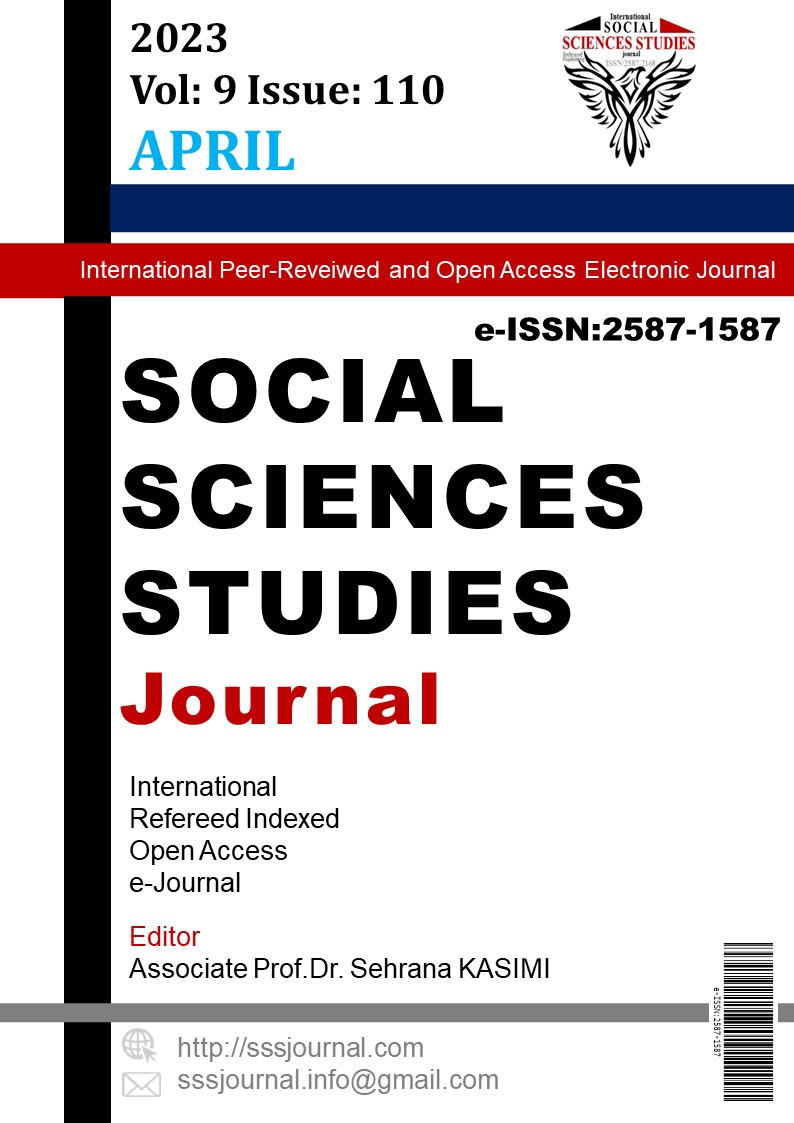Buhûrîzâde Mustafâ Itrî’nin Mecmûatü’r-Resâil Türünde Tertip Ettiği Bir Güfteler, Fasıllar ve Eş’âr Mecmûası: “Mecmûa-ı Eş’âr”
Author :
Abstract
Bu çalışma, İstanbul Üniversitesi Nadir Eserler Kütüphanesi bünyesinde bulunan fakat herhangi bir mürettîb/müntensih adıyla kayıtlı olmayan, kaynak olarak kullanıldığı çeşitli akademik çalışmalarda ise “T.Y. 5525” numaralı yazma mecmûa, güfte mecmûası, mecmûatü’r-resâîl gibi isimlerle zikredilen mecmûanın, esasen Buhûrîzâde Mustafâ Itrî tarafından tertîb edildiğinin delilleriyle birlikte sunulması ve “Buhûrîzâde Mustafâ Itrî’nin ‘mecmûatü’r-resâîl’ türünde ‘Mecmûa-ı Eş’âr’ isimli yazma eseri” şeklinde tanıtılması amacıyla hazırlanmıştır. Yaptığımız tetkikler neticesinde bu mecmûanın, İstanbul Üniversitesi bünyesinde 1947-48 yıllarında hazırlanan “Itrî ve Bestelediği Şiirler /Türkoloji Mezuniyet Tezi” isimli tezle akademik manada ilk kez Semire Oskay tarafından tanıtıldığı tespit edilmiştir. Fakat bu tez çalışmasında mecmûanın mürettibine dair bir bilgi verilmeksizin, yazmada yer alan “Itrî” ismiyle kayıtlı eserlerin yalnızca bir kısmının incelenerek günümüz Türkçesine aktarıldığı görülmektedir. Harun Korkmaz tarafından 2014 yılında hazırlanan “İstanbul Üniversitesi Nadir Eserler Kütüphanesi’ndeki Musiki Yazmalarının Kataloğu” isimli yüksek lisans tezinde ise ilk kez, bu mecmûanın Itrî’ye ait olduğu zikredilmiştir. XVII. yüzyılın son çeyreği ile XVIII. yüzyılın başlarında kaleme alındığını tespit ettiğimiz 238 varaktan müteşekkil bu eser, XVI. ve XVII. yüzyılda yaşamış şairlerin şiirlerinden oluşan bir “Eş’âr Bölümü” ve XVII. yüzyıl mûsikîşinâslarının bestelerinden oluşan bir “Güfteler Bölümü”nü içermektedir. Bu yazma eser ayrıca XVII. Yüzyıl müelliflerinden Kâtip Çelebi’nin “Mîzânü’l-Hâk fî İhtiyâri’l-Ehakk” isimli mensûr eseri ile XVI. ve XVII. Yüzyılları idrak etmiş şair/müellif Veysî’nin“Vak’anâme-i Veysî” (Hâb-nâme-i Veysî) isimli mensûr eseriyle birlikte, yine Veysî’ye ait manzûm Tevbe-nâme’sini de hâvîdir. Karma konulardan müteşekkil muhtevasıyla başta XVII. yüzyıl mûsikî yapısı olmak üzere, XVI. ve XVII. yüzyıl Eski Türk edebiyatı sahasına da ışık tutan Mecmûa-ı Eş’âr’ın, bu manada kadim bir kaynak olarak geçmiş ve günümüz arasında bir köprü vazifesi sağladığı hiç şüphesizdir. Yukarıda isimlerini zikrettiğimiz mensûr eserlerin konuları dikkate alındığında ise mezkûr asırlardaki siyasî gelişmeler bakımından, Osmanlı tarihi adına da bir kaynak teşkil eden Mecmûa-ı Eş’âr’ın muhtevası, detaylı bir şekilde incelenerek bu çalışma bünyesinde araştırmacıların istifadesine sunulmuştur.
Keywords
Abstract
This work is in the Rare Books Library of Istanbul University, but not registered with any scribe / copyist name and when used as a source in various academic studies, manuscript journal, journal of lyrics, mixed journal numbered “T.Y. 5525” etc. It aims to present the journal mentioned with names together with the proofs that it was actually copied by Buhurizade Mustafa Itri. And it was also prepared for the purpose of introducing it with the name of “Buhurizade Mustafa Itri’s manuscript titled ‘Mecmûa-ı Eş’âr’ in the type of ‘mixed journal’” As a result of our research, it has been determined that this journal was first introduced academically by Semire Oskay with the thesis titled “Itrî ve Bestelediği Şiirler /Türkoloji Mezuniyet Tezi”, which was prepared in 1947-48 within the body of Istanbul University. However, in this thesis, no information was given about the copyist of the journal, and it is seen that only some of the works registered with the name “Itri” in the manuscript were analyzed and transferred to today's Turkish. In the master's thesis titled “İstanbul Üniversitesi Nadir Eserler Kütüphanesi’ndeki Musiki Yazmalarının Kataloğu” prepared by Harun Korkmaz in 2014, it was stated for the first time that this journal belongs to Itri. This manuscript, which we have determined to have been written in the last quarter of the 17th century and the beginning of the 18th century, consists of 238 leaves. This manuscript contains a “Poetries Section” consisting of poems of poets who lived in the 16th and 17th centuries, and a “Lyrics Section” composed of compositions by 17th century musicians. This manuscript also includes the 17th century writer Katip Çelebi’s prose work “Mîzânü’l-Hâk fî İhtiyâri’l-Ehakk” and the 16th and 17th century poet/author Veysi’s “Vak’anâme-i Veysî” (Hâb-nâme-i Veysî) prose work. This manuscript also includes the verse “Tevbe-nâme” of Veysi. Thanks to its content consisting of mixed subjects, Mecmûa-ı Eş’âr primarily sheds light on the music structure of the 17th century and the field of Old Turkish literature of the 16th and 17th centuries. And with this feature, it is certain that it provides a bridge between the past and the present as an ancient source. Considering the subjects of the prose works whose names we have mentioned, the content of Mecmûa-ı Eş’âr, which also constitutes a source for the Ottoman history in terms of political developments in the aforementioned centuries, has been examined in detail and presented to the researchers with this study.





